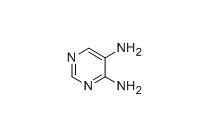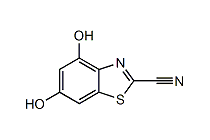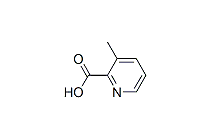- Home
- Industrial & Lab Chemicals
- Custom Synthesis
- 010-000-088 2,3-Dibromo-4-methylthiophene
010-000-088 2,3-Dibromo-4-methylthiophene
CAS Registry Number: 125257-38-7
Molecular Formula: C5H4Br2S
Molecular Weight: 255.961
Purity: 98%HPLC
- Description
Description
Description
2,3-Dibromo-4-methylthiophene is an organic compound that contains a thiophene ring structure. It is commonly used in fields such as organic synthesis, materials science, and drug development.
Properties
| Molecular Formula | C5H4Br2S |
| Molar Mass | 255.958 g/mol |
| Density | 2.006g/cm3 |
| Boling Point | 241.4°C at 760 mmHg |
| Flash Point | 99.8°C |
| Vapor Pressure | 0.0557mmHg at 25°C |
| Refractive Index | 1.62 |
Safety Information
| Category | Details |
| Symbol |  
GHS05, GHS07 |
| Signal Word | Danger |
| Hazard Statements | H302 – H318 |
| Precautionary Statements | P280 – P301 + P312 + P330 – P305 + P351 + P338 + P310 |
| Personal Protective Equipment (PPE) | Dust mask type N95 (US), Eyeshields, Gloves |
| RIDADR | UN 2810 6.1 / PGIII |
| WGK Germany Classification (WGK) | WGK 3 |
| Flash Point (°F) | 230.0 °F |
| Flash Point (°C) | > 110 °C |
Applications
Organic Synthesis
- Intermediate for Complex Molecules: Utilized as an intermediate in the synthesis of more complex molecular structures, including pharmaceutical molecules and functional materials.
- Brominating Reagent: Acts as a brominating agent in organic reactions, participating in substitution or addition reactions.
Materials Science
- Precursor for Conductive Polymers: In organic electronics, it is used to prepare precursors for conductive polymers like polythiophene.
- Polymer Modification: Employed to modify polymer materials, enhancing their electrical conductivity and stability.
Drug Development
- Synthesis of Active Pharmaceutical Ingredients: Serves as an intermediate in the synthesis of active drug molecules, particularly in the development of sulfur-containing heterocyclic compounds.
Agricultural Chemistry
- Synthesis of Pesticides and Insecticides: Used in the production of pesticides, insecticides, and other functional agricultural compounds.
Safety and Environmental Considerations
Irritancy: Organic brominated compounds are typically irritants and can cause irritation to the skin, eyes, and respiratory system.
Toxicity: Prolonged or high-concentration exposure may have adverse effects on health. It is essential to strictly adhere to safety operating procedures to minimize risks.
Flammability: Organic bromides are often flammable liquids. They should be kept away from open flames and high-temperature environments to prevent fire hazards.







